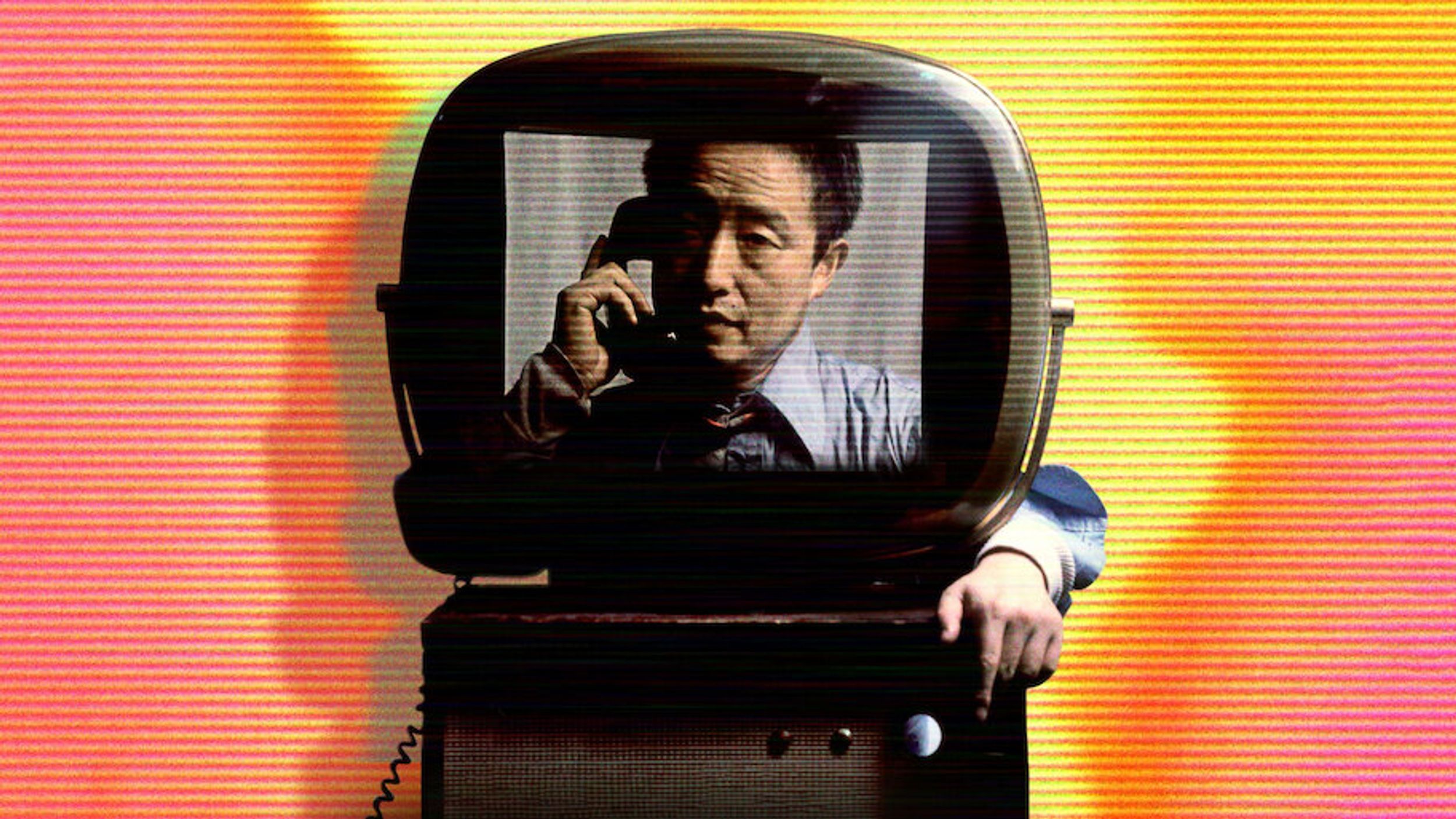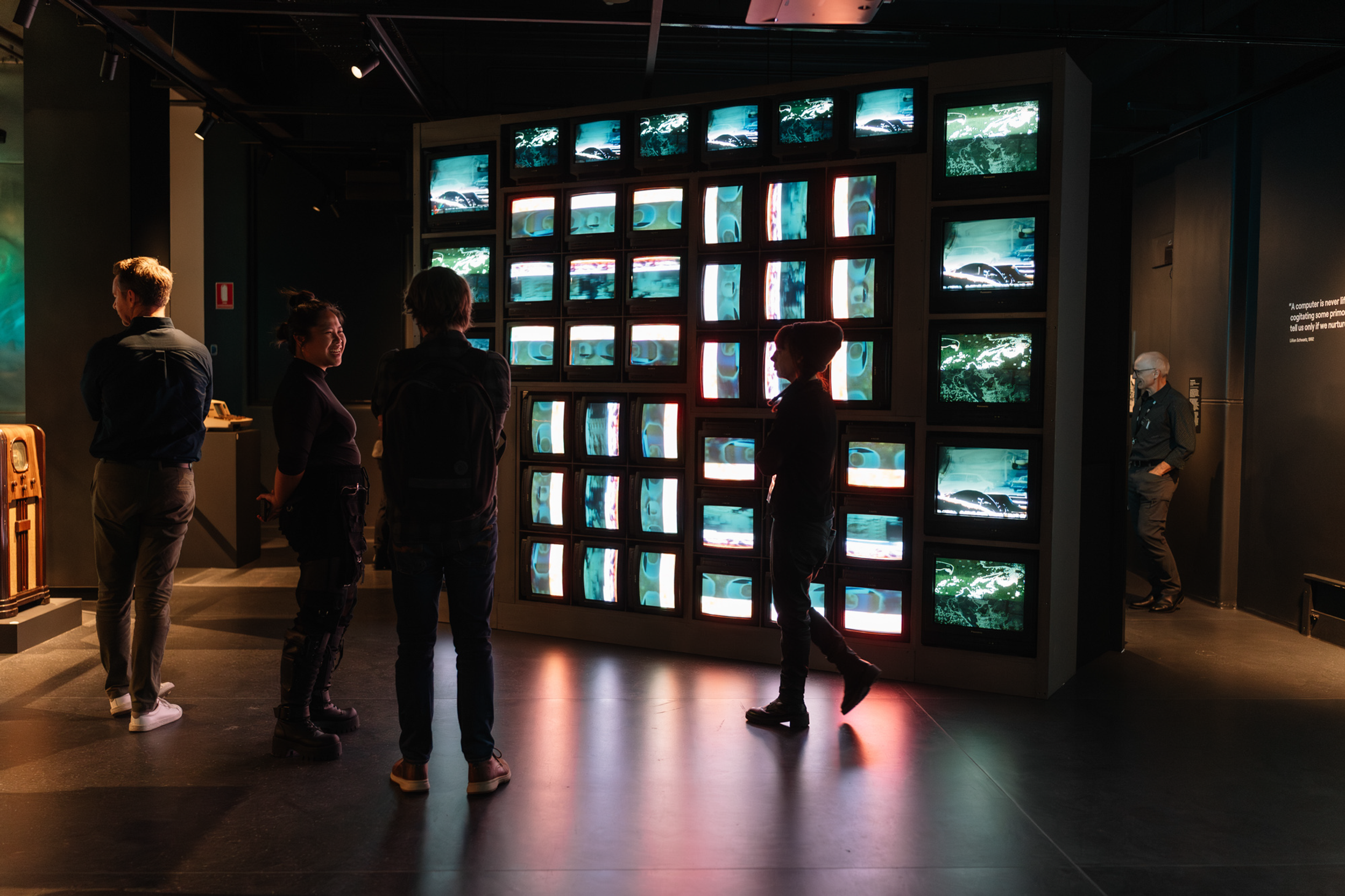Film Screening & Curator Talk | Nam June Paik: Moon is the Oldest TV
Programs & Events

Nam June Paik: Moon Is the Oldest TV (2023). Directed by Amanda Kim. Image courtesy of Madman Entertainment.
Television has attacked us for a lifetime, now we fight back. – Nam June Paik
Who was Nam June Paik, video artist, musician and arguably the most famous Korean artist in modern history? Director Amanda Kim tells the story of Paik, the 'father of video art' and his meteoric rise in the New York art scene including his Nostradamus-like visions of a future in which 'everybody will have his own TV channel.' Paik's predictions included the 'Electronic Superhighway' where technologies would connect to global networks and how the future of the internet wouldn't be quite the utopia of free-flowing information imagined in the 1990's.
Paik's future is now all around us and Nam June Paik: Moon is the Oldest TV shows us how we got here.
This screening begins with a talk from NCM's Senior Curator Jemimah Widdicombe on Nam June Paik and his vision of the future.
Combine this screening with your last chance to experience Paik's famous video sculpture, Internet Dream, currently on display at NCM in Signal to Noise until Sunday 14 September.
Essential viewing for anyone interested in the origins of video art, mass media and the internet. – The Hollywood Reporter
A tantalising portrait of a revolutionary Korean-born artist. – Variety
Amanda Kim | USA | 2023 | Unclassified (15+)
Narration by Academy Award Nominee Steven Yeun
Courtesy: Madman Entertainment
Runtime: 109 mins
Nam June Paik (1932–2006) was a Korean-American artist, widely regarded as the ‘father of video art.’ He anticipated many of the technological advancements and their social and cultural impacts that would come to define the digital age. Paik famously declared, “the future is now,” and was instrumental in establishing video art as a genre. Known for iconic works like TV Buddha and Electronics Superhighway, Paik used television and video as mediums to explore themes of global connectivity and the evolving relationship between humans and technology.
Accessibility
Seminar Room
- NCM is fully wheelchair accessible
- This program includes seating for all participants
- All gender and accessible toilets available on both levels
- Hearing loop available
- NCM is a high sensory space with a variety of noise and lighting
- If you have any other access needs we can help with, please get in touch, we'd love to help


Nam June Paik, Internet Dream, 1994, on display in 'Signal to Noise', NCM, 2025. Photo by Phoebe Powell.
About Signal to Noise

Signal to Noise
Signal to Noise explores how artists work with, challenge, or complicate the relationship between signals and noise—disruptions, glitches or interference—in communication technologies and the messages they send. These technologies include the internet, telephones, radio and television, artificial intelligence, social media algorithms, and even the sounds of the natural world.
Learn more about Signal to Noise
